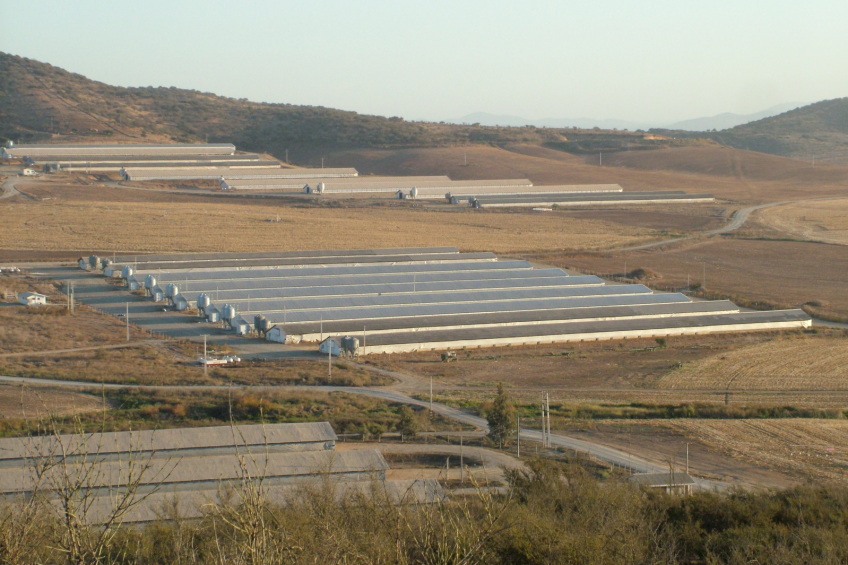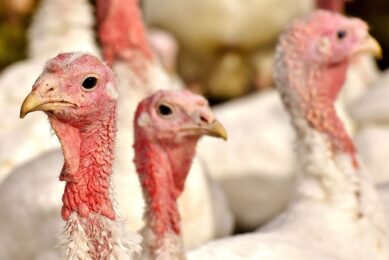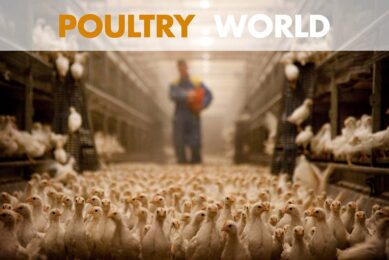Chile’s full integration demands high standards

The poultry industry in Chile has experienced considerable growth in recent years. As a result, the country is self-supporting and also very much involved in exports. Only a small number of large integrators dominate the market, particularly on the broiler side, demanding very skilled management and high biosecurity standards. All integrators understand the necessity of this approach.
By Ad Bal and Mª Angeles Gutiérrez
Chile is one of the major poultry producing countries in Latin America. It is well positioned in the south-west of the continent, to a large extent isolated through the natural barrier of the Andes Mountains. This offers the country a high degree of natural protection against diseases. Additionally, the climate is also very mild and favourable. As a result, poultry production is a major business in Chile, both for the domestic market, as well as for exports. Historically, only a very small number of fully integrated companies dominated the market. This means that no small-scale operations exist at the production or at the processing and marketing side. Automatically, this is the basis for very high production standards as all these companies are managed by highly skilled professionals. They all realise that one weak link can easily make the entire chain break. Obviously, they don’t want to run the risk of letting this happen, which explains the high level of professionalism.
“Our members have a common goal,” says President of the broiler producers association of Chile (APA), Juan Miguel Ovalle Garces. All of them are big players in the poultry business, which is becoming more professional and complex. They are all facing the same legislation and pressure from consumers. Therefore, APA is assisting its members in dealing with these challenges. First they give technical support such as coordination for logistic matters and sampling for sanitary testing. They are also involved in improving traceability, which is demanded by the consumers, on both a domestic and international level. Secondly, APA is very much involved in international legislation and negotiates on behalf of its members with world trade bodies. Thirdly, APA supplies specialised information to its members.
Turkey specialist Sopraval
Chile’s major turkey producer is Sopraval, which is a company partly owned by Chile’s largest food producer Agrosuper. Shares of Sopraval, however, are divided into equal fractions by the Allende family and Agrosuper. “We have full confidence in the value and the advantages of turkey meat,” says Patricio Allende, Sopraval CEO.
“But we must be realistic. Traditionally, turkey meat is on the menu at Christmas time, so it is very seasonally. It’s impossible to keep a business like ours running for just this occasion. We therefore need to focus on the advantages of turkey meat in order to make it attractive for the daily menu. There is good reason for this as turkey meat is tasty, healthy and convenient. Additionally, a wide variety of products are possible. We must realise, though, that turkey meat is competing with other kinds of meat. Breast meat competes with chicken meat, and legs compete with beef. So, in this regard, marketing is a key issue at Sopraval,” continues Allende. “We believe in the nutritional value of turkey meat. We therefore offer all kinds of products under our own brand name, ranging from ham, steak, fillet, sausage, chopped breast and many more. But we need to convince the customer about all the benefits, and that’s why our marketing efforts are so important.
Along with a wide array of products, we offer many recipes via the internet to lower the barriers and make choosing turkey meat easier for customers. We believe that we are on the right track, as turkey consumption is rising steadily in Chile. We offer products with only 2% and 6% fat content, which makes turkey meat even more attractive. About 70% of our production is sold on the domestic market, with the remaining exported as deep frozen products.”
From PS to slaughter
Like all the big integrators in Chile, Sopraval likes to keep the entire process in its own hands, ranging from the reproduction of parent stock, to slaughter and marketing of the end products. Sopraval only uses Hybrid stock fromCanada. Eggs are imported, hatched and the breeders are reared by themselves. The growing stock are kept in brooding houses for only six weeks, after which they are taken to finishing farms located near to the slaughtering facilities. Females are kept until 13 weeks of age, once they have reached a live weight of about 7.5 – 8 kg. Toms are kept in the barns up until 18 weeks when they have reached a live weight of 17 – 17.5 kg.
Over 95% of the turkeys are further processed to be used for the wide array of Sopraval products, while the remaining 5% is processed as whole birds. At any given time, approx. 2.5 million growing birds are kept, securing permanent supply to the slaughtering facility, which is built by Stork, currently slaughtering 28,000 turkeys per day. This accounts for 7 million birds annually. At full capacity the plant, which includes wastewater treatment, can run 10 million birds per year. Very high sanitation standards apply for all facilities of Sopraval, as they meet with ISO 9.001, ISO 14.001, HACCP and British Retail Consortium (BRC) certifications. The company believes that this is absolutely essential. It appears that here, quality is a higher priority than slaughtering volume.
Also strong in chicken
The same principles apply to Super Pollo, the sister company of Sopraval, which is a 100% subsidiary of Agrosuper. Super Pollo’s yearly sales surpass 273,000 tonnes, making it the biggest producer in Chile with a 60% national market share. Sales amount to US$562 million yearly. Super Pollo runs more than 1,500 grower houses located in the 5th, 6th, and metropolitan regions of Chile. The company imports Ross GP stock from the US, enabling them to have their own reproduction resources. Super Pollo owns three hatcheries – one for breeder and two for broiler production. All three are equipped with Chickmaster incubators.
Super Pollo runs two slaughtering plants, one of which is located in San Vicente near the harbour of San Antonio. In 2006, the facility burnt down completely enabling Super Pollo to rebuild a state-of-art facility that meets the highest standards. This new plant currently runs at 350,000 birds per day. Total monthly capacity of the two plants is above 90,000 tonnes. In order to have evenly-sized birds at the slaughter line, males and females are grown separately. Super Pollo produces fresh meat for the domestic market, and cut-ups and deep frozen meat for the export markets, mainly in the Americas, the EU, China (mainly paws) and Japan. This is done primarily under their own “Super Pollo” brand name. All Agrosuper plants comply with the highest quality control standards for the processing, packing, and conservation of meat, and are certified as mentioned.
Fully family-owned
Another big player on the Chilean market is family-owned company Ariztía. This fully integrated company is still managed by the head of the family, Manuel Ariztía, and his sons and daughters. Apart from poultry, Ariztía also produces cheese and mushrooms, and additionally they have arable land on which they grow crops for their own feed manufacturing. Yet, poultry production is by far their biggest business. The company was founded in 1936 by Hernan Ariztía, who focused on fruit growing and egg production from a flock of 20,000 hens.
In the fifties, Manuel Ariztía took over the business from his father and began broiler production. The eighties were characterised by enormous growth, which was, to a large extent, thanks to the availability of first-class technology. Market share went up from 9% in 1974 to 30% in 1984, where it has stabilised. Exports to Japan began in the eighties, which demanded Ariztía to improve quality. Turkey growing began in the early 1990s.
Ariztía around the world
Regarding broilers, Ariztía imports Cobb GP stock as day-old chicks from the US. Hatching eggs for turkey breeders are imported from Canada. Broiler breeders are kept on five different locations with three houses for every flock. At any given time they have a stock of about 600,000 breeders that supply broiler chicks for their own use. Ariztía have housing capacity of approx. 1 billion m2 to keep their broilers in a density of about 11-13 birds per m2.
Most of the broilers are kept in the vicinity of their headquarters in the city of Melipilla at the “Granja Huechun”. This is located in a valley owned by Ariztía. On each farm, flocks of the same age are kept and all these farms have their own caretaker. The all-in-all-out principle applies to each farm.
Ariztía have four hatcheries, one of which is for turkeys, one for breeder stock, and two for broilers. Most of the incubators are supplied by Chickmaster, but Ariztía is now also running some Pas Reform machines. The processing plant was installed by Meyn. Today, Ariztía exports approx. 20% of its production to about 30 countries in the Americas, Europe and Asia Pacific. Of their turnover, 90% is related to chicken and turkey products. Like other integrators, everything is marketed under their own name.
“The package is our advertising,” says Manuel Ariztía. “Our brand is primarily known in the Americas, but we also expect to gain ground in Europe. Depending on the market, we can supply all kinds of products, such as turkey ham to Mexico, or smoked whole birds to other markets. Everything is possible.”
Don Pollo produces for Chile
A smaller integrator is Don Pollo. They do not produce their own parent stock, but buy these from breeding companies. About 90% comes from Ross and the remaining 10% from Cobb. They keep four rearing flocks and sevenflocks in production; 150,000 breeders in total. All seven PS flocks are located within a 7 km radius of the hatchery, securing quick supply to the hatchery with 18 setters and 18 hatchers. All these machines, which have been supplied by Chickmaster, have a capacity of 90,000 eggs. The hatchery uses eggs from 25-65 weeks of flock age.
Day-olds are taken to four different locations with 16 crops per location. Because of the relatively small size of their company, Don Pollo does not sex-separate the broilers. This has to do with limitations regarding logistics, and the capacity of the slaughtering plant, which does not allow having two different lines. This means that males and females are grown together up until 43-45 days. Already, an average live weight difference of 300 g exists, which can still be managed at the slaughtering line. The birds are taken to slaughter at an average live weight of 2.5 – 2.7 kg. Don Pollo only produces for the domestic market with a current market share of about 7%.
Yemita major egg producer
Apart from meat, very professional egg producers are also based in Chile. A big player and integrator is Champion S.A, which produces and markets white and brown eggs under the Yemita brand name. Yemita began in the layer business 53 years ago. Today, Yemita is the Lohmann Tierzucht distributor for Chile, for which the company runs a PS hatchery. Moreover, they have their own egg production facilities. Yemita currently produces just over 1.35 million eggs per day at four different locations. They produce for consumers, as well as for the industrial market. At their main facility, Leyda Farm, Yemita keeps about 1.1 million layers in Big Dutchman and Salmet cages. “For sanitary reasons, we wish to keep our farms as protected and isolated as possible,” say MD Benedicto Aguado and Poultry Production Manager Ignacio Becker.
“Therefore we only collect the eggs and transport them to our central grading and packing station in Malloco near the city of Santiago. From a logistic point of view that’s also beneficial, but foremost it’s because we don’t want all the trucks of which we don’t know where they come from, entering our site. Instead, our own contract trucks take the eggs to the packing station. These meet with our own sanitary regime, which minimises the risk of transmitting diseases. This is part of our strategy to keep our business running at a professional level. Small producers should also understand the necessity of such an approach to avoid health problems.”
At their Leyda Farm, Yemita also runs a composting facility where about 30% of the manure of the farm is processed before being sold as a fertiliser to crop farmers. This facility has a capacity of 5,400 tonnes per year. Altogether, “Yemita” and the broiler integrators clearly demonstrate the professional level the poultry business in Chile. Hats off to them!
The broiler industry in Chile
Meat production in Chile during 2008 reached over 1,394,173 t, 43.86% of which corresponded to poultry meat, 37.47% pork, and 17.23% beef, with other meat making up 1.44%. In 2008, Chile produced 611,511 t of poultry meat, 82.4% of which corresponded to broilers, 16.7% to turkey, and the difference to other fowl. Production in the past decade has experienced large growth with annual increases of 4.5%. Currently, 79% of poultry production is destined for national consumption. However, the industry also aims to increase its participation in exports.
Of the total meat consumed nationwide, 43% corresponds to chicken and turkey meat. Chicken represents the meat with the highest consumption per capita, with nearly 25.9 kg per year and turkey reaching 4.2 kg per capita. Turkey consumption has experienced a growth of 93.5% over the past 10 years. This growth can be explained by the improvements made in production efficiency, which has resulted in processing and product quality.
The industry is concentrated with only seven fully integrated companies operating across the country. Each one of them is present in every aspect of the production chain, from breeding to distribution, which ensures a high level of product traceability. In general, Chilean meat production experienced an extraordinary growth from 1998-2008, with an average yearly increases of 4.5%. Poultry meat production, however, has had an even more dynamic development with production increases of over 59.7% during the same period (1998-2008). Consumption per inhabitant in Chile for 2010 is forecast at 65 kg of white meat per year, of which 36 kg correspond to poultry meat. Chicken and turkey exports in 2008 reached more than 127,000 tonnes, reporting more than US$269 million. Today, supported by the open trade policies in Chile, poultry companies have developed exports since 2000. It is expected to reach US$320 million by 2009.
Source: APA www.apa.cl













